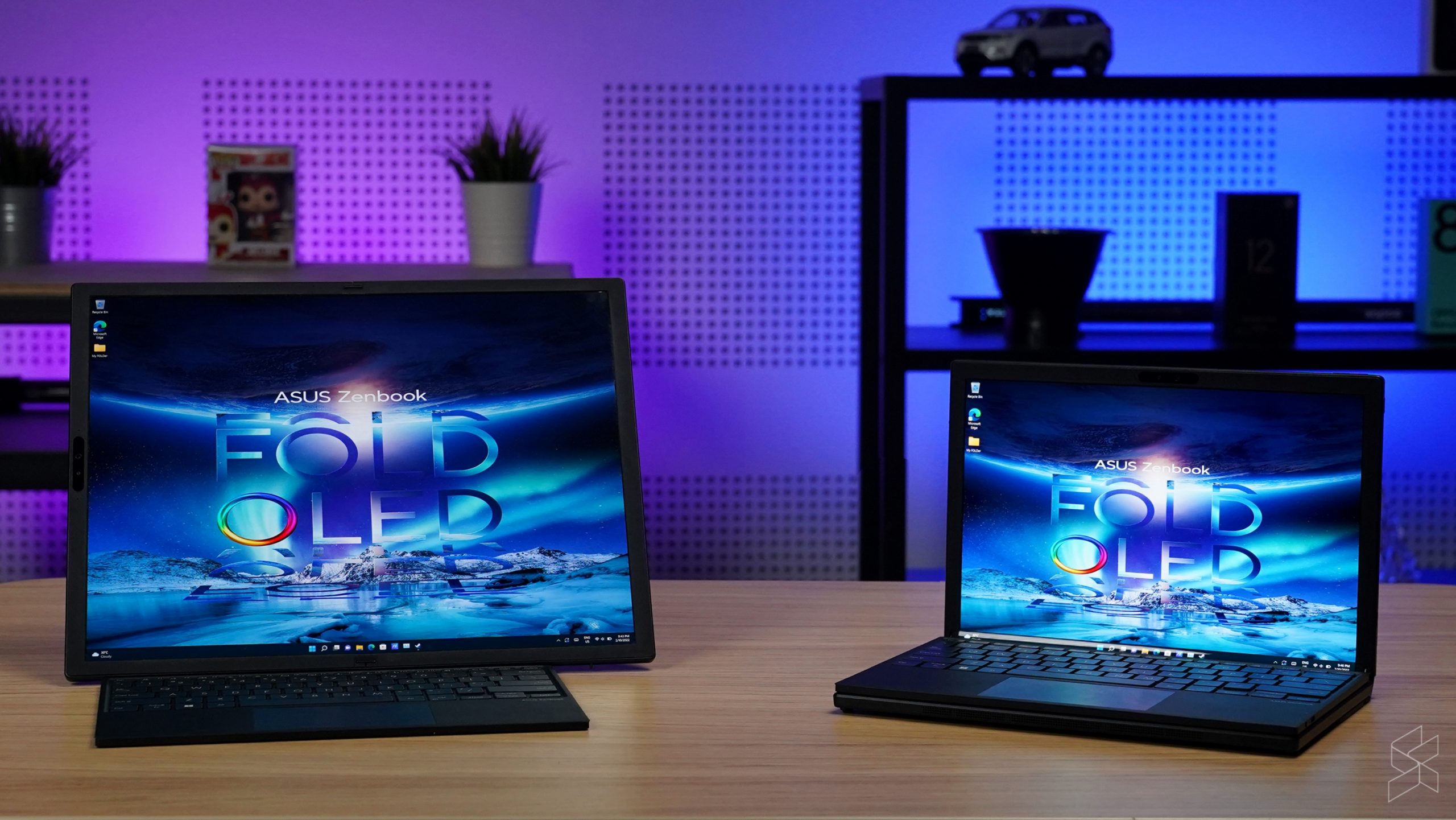Have you ever looked at your laptop and wondered to yourself, “Man, if only both halves of the laptop were a giant screen instead of having a keyboard“? Well, Asus seems to have a solution for you. Meet the Asus Zenbook 17 Fold OLED.
This is not the first time we’ve seen something like this before of course. Back in 2020, Rory got a chance to take a look at the Lenovo ThinkPad X1 Fold, a foldable laptop running Windows 10. He was a bit on the fence about it really, finding the hardware itself kind of impressive while lamenting the poor software integration of Windows 10 on a foldable tablet. Well, seeing as Windows 11 was designed with touchscreen users in mind, will Asus’ take on the foldable be able to take flight?
It performs fine, if unspectacular
Before we actually go onto how it’s like to use it, I wanted to first take a look at its performance. This is because it’s one of the first 12th Gen Intel U-series chips we got to try out; the U-series are Intel’s processors meant for low power devices with just a 15W TDP. Unlike previous generations of Intel’s mobile processors where a U-series chip could be configured in either 25W or 15W, this time round all the 25W chips are now classed as P-series chips.
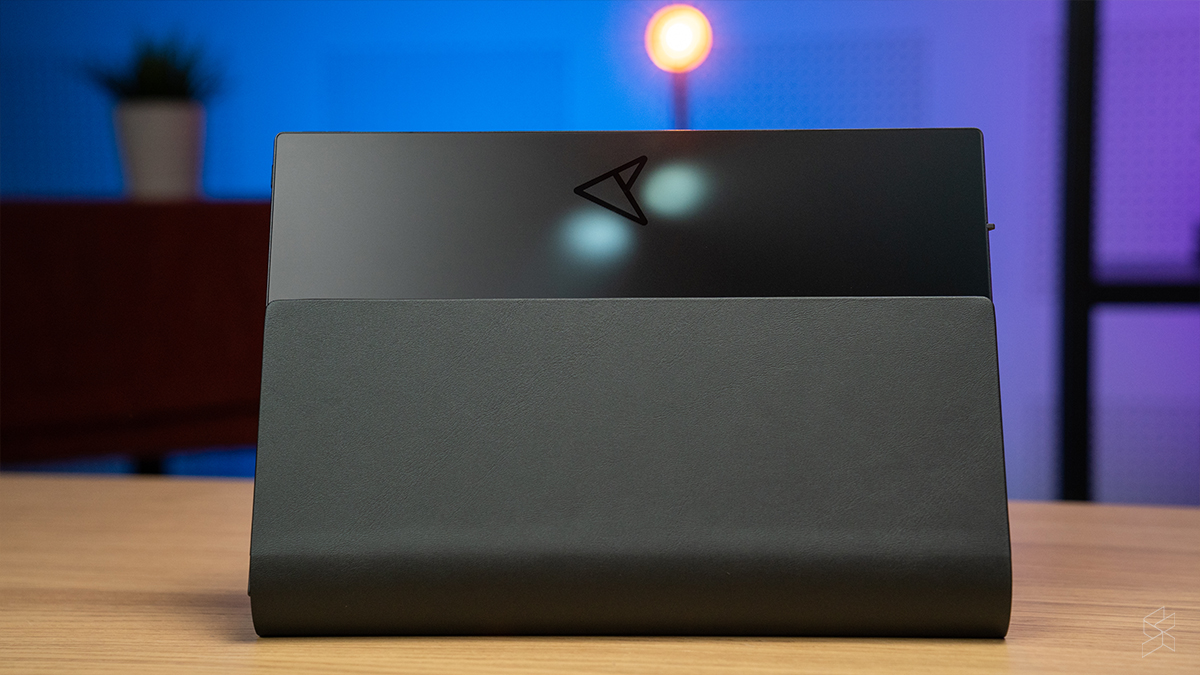
The Zenbook 17 Fold OLED, perhaps by the nature of its design, comes with an Intel Core i7-1250U mated to 16GB of LPDDR5 RAM and a 1TB SSD. And for the most part, using it was a decent enough experience. This is clearly not your productivity beast or your gaming machine, but for your day-to-day word processing and some mild media editing, it works fine enough. We ran some benchmarks on it too, and for the most part the synthetic tests also say the same thing: decent, if unspectacular.
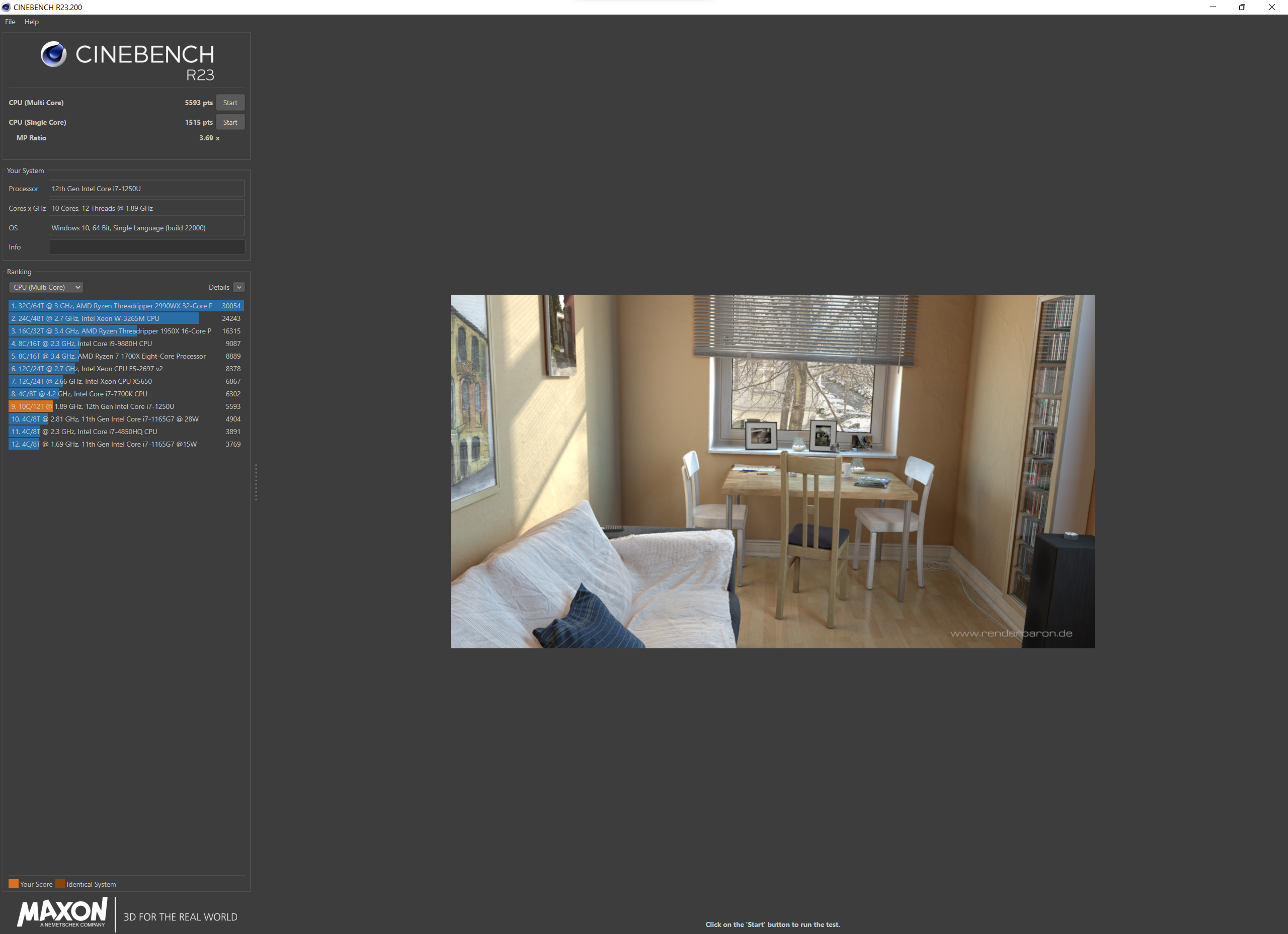
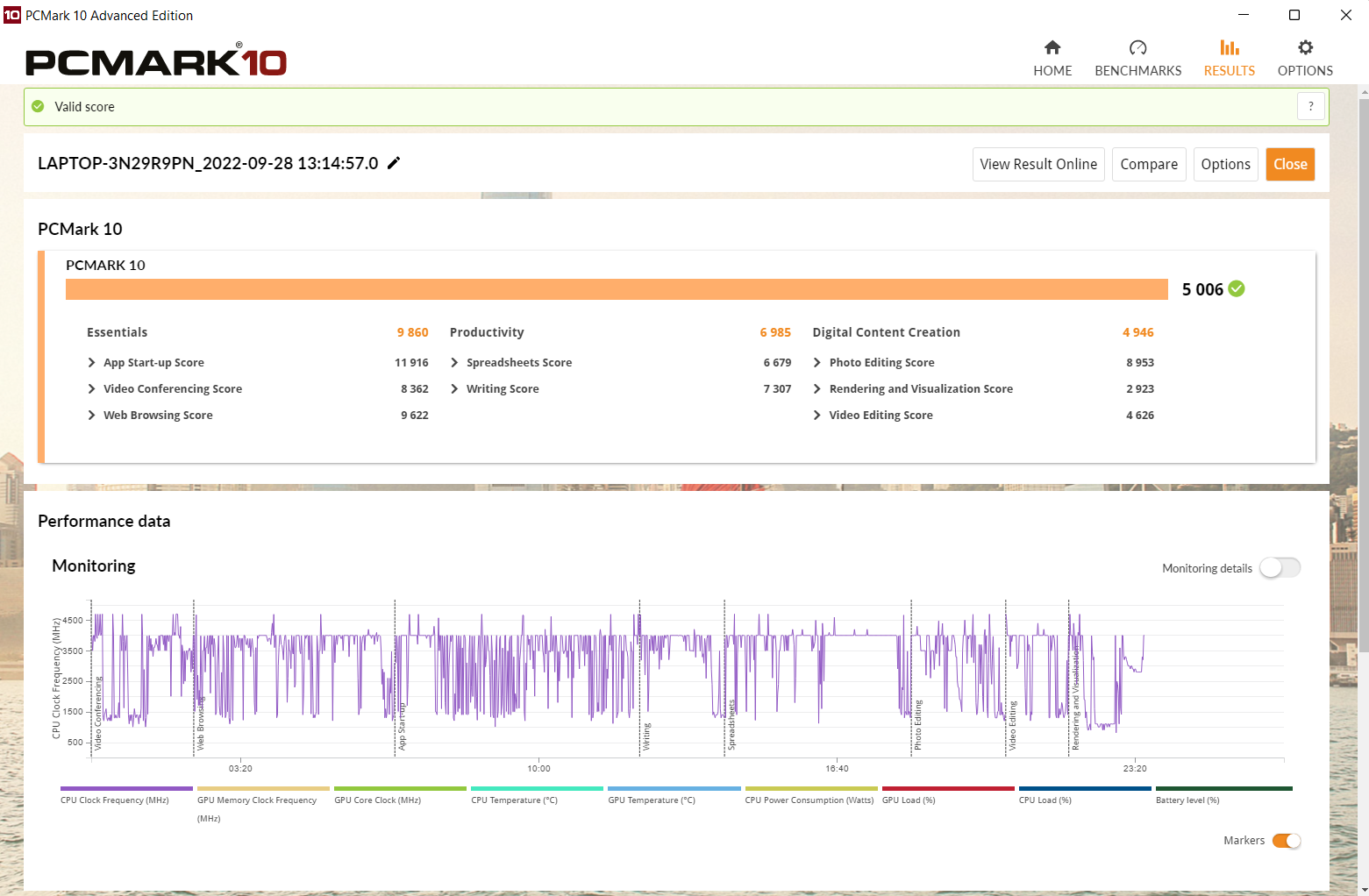
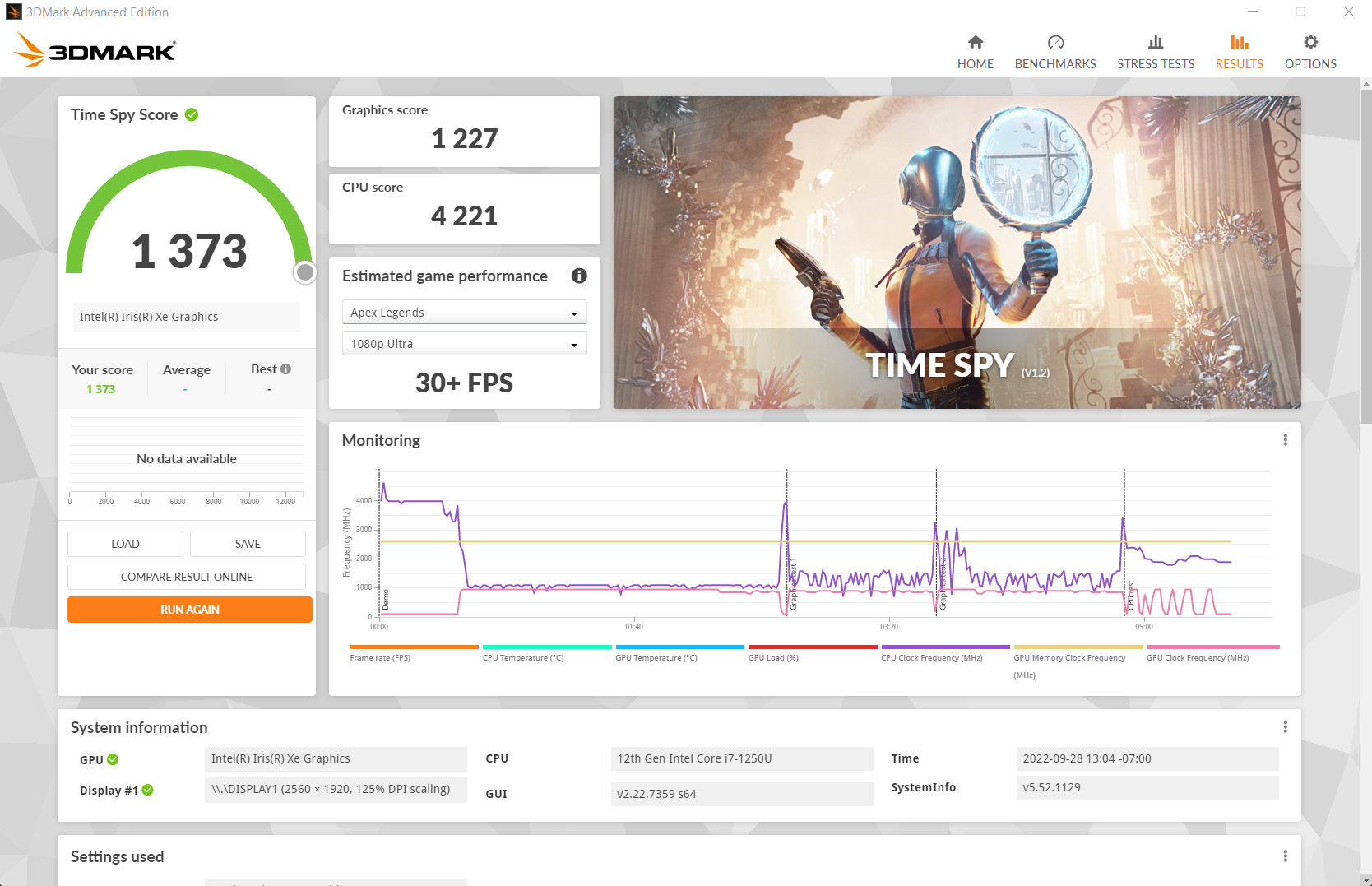
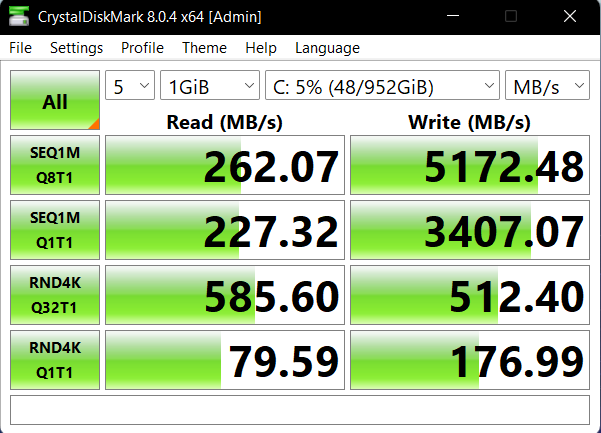
Gaming meanwhile is a complete hit or miss. I obviously knew I wasn’t going to get 144fps while gaming in 4K, but knowing how much work Intel had put into improving their integrated graphics solution, I expected to at least be able to get it to run at 720p with at least 30fps in some games.
However, the biggest issue I ran into wasn’t actually getting it to run games well, but to run games at all. Due to the eccentric nature of the display aspect ratio, trying to get games to fit the screen was half the battle. Total War: Three Kingdoms and F1 22 for example launched only on the left side of the display when folded, and the former wouldn’t fit the fullscreen’s aspect ratio properly at first either. This led to a lot of troubleshooting in games before getting them to actually run well enough. I expected some issues of course, and I don’t think anyone who actually gets a Zenbook 17 Fold OLED is going to use it for gaming anyway.
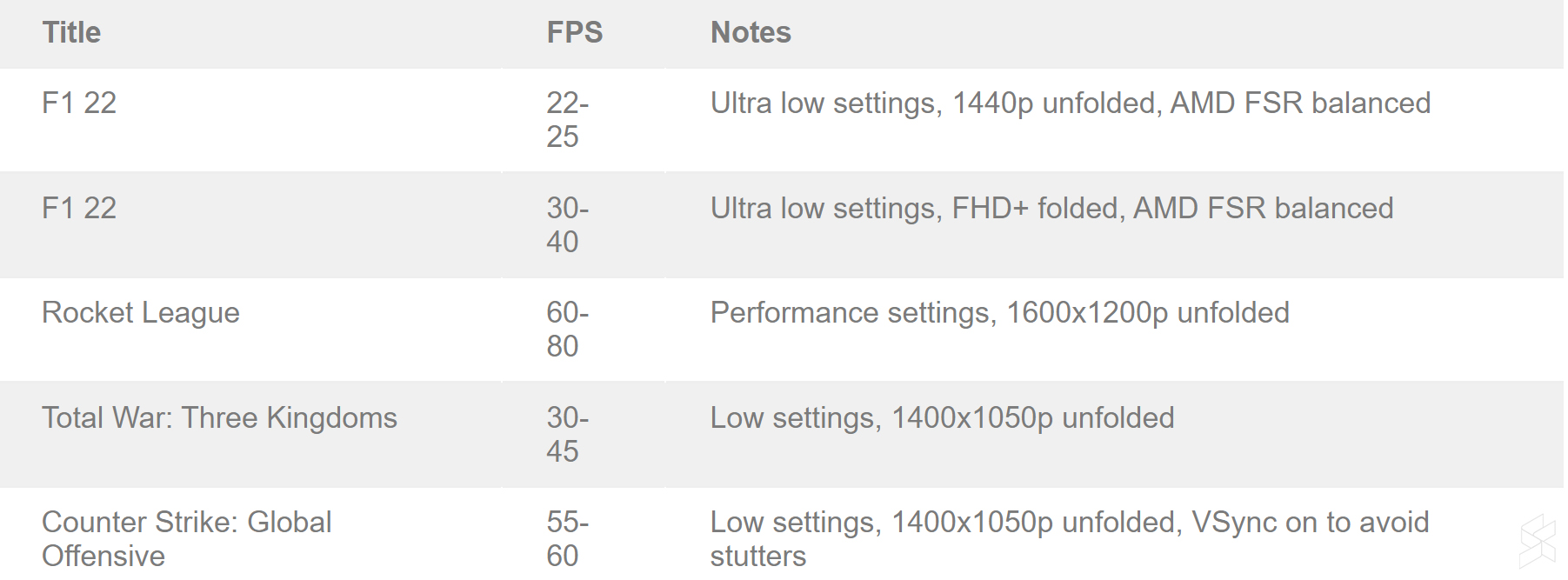
As for the whole software and UI experience, it’s actually alright. The auto rotation worked fast enough to not annoy me, and when you attach the keyboard onto the right half of the display, the Zenbook 17 Fold OLED automagically moves into laptop mode. The touch experience itself is also fine, though using the virtual keyboard isn’t a great experience. There’s also some software tools added by Asus here such as Adaptive Lock which can dim the display and lock your device when it detects that you’ve walked away from your desk.
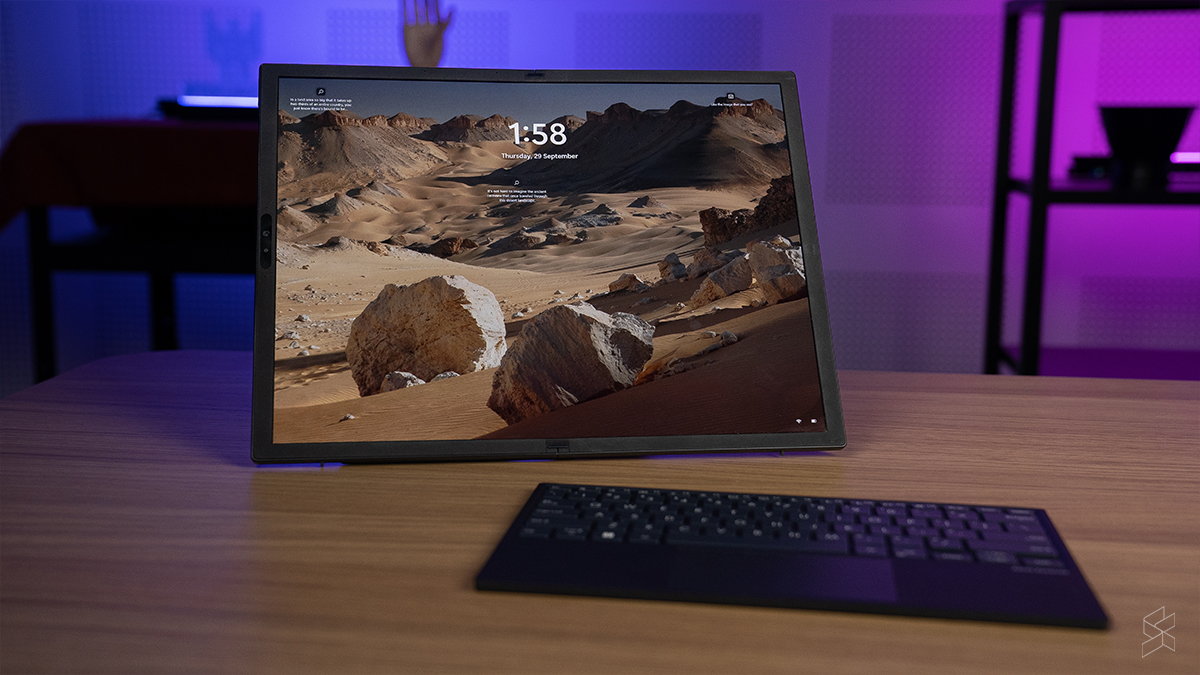
Battery life meanwhile was good enough, with it lasting around 5-6 hours of use away from a wall socket. This was with it running at roughly 50-70% brightness most of the time with a mix between laptop and desktop mode. I also pretty much left a lot of things running in the background like I normally would, such as Photoshop, Discord, Slack, Spotify while my multiple windows of Chrome each would have its own army of tabs open. It does get a little bit warm; temperatures hit as high as 99°C during benchmarks, though I never saw it hit that high during regular use.
But you know what, enough of the boring stuff. Let’s talk about the actual reason why people would buy the Zenbook 17 Fold OLED: that foldable display.
There’s nothing quite like this display
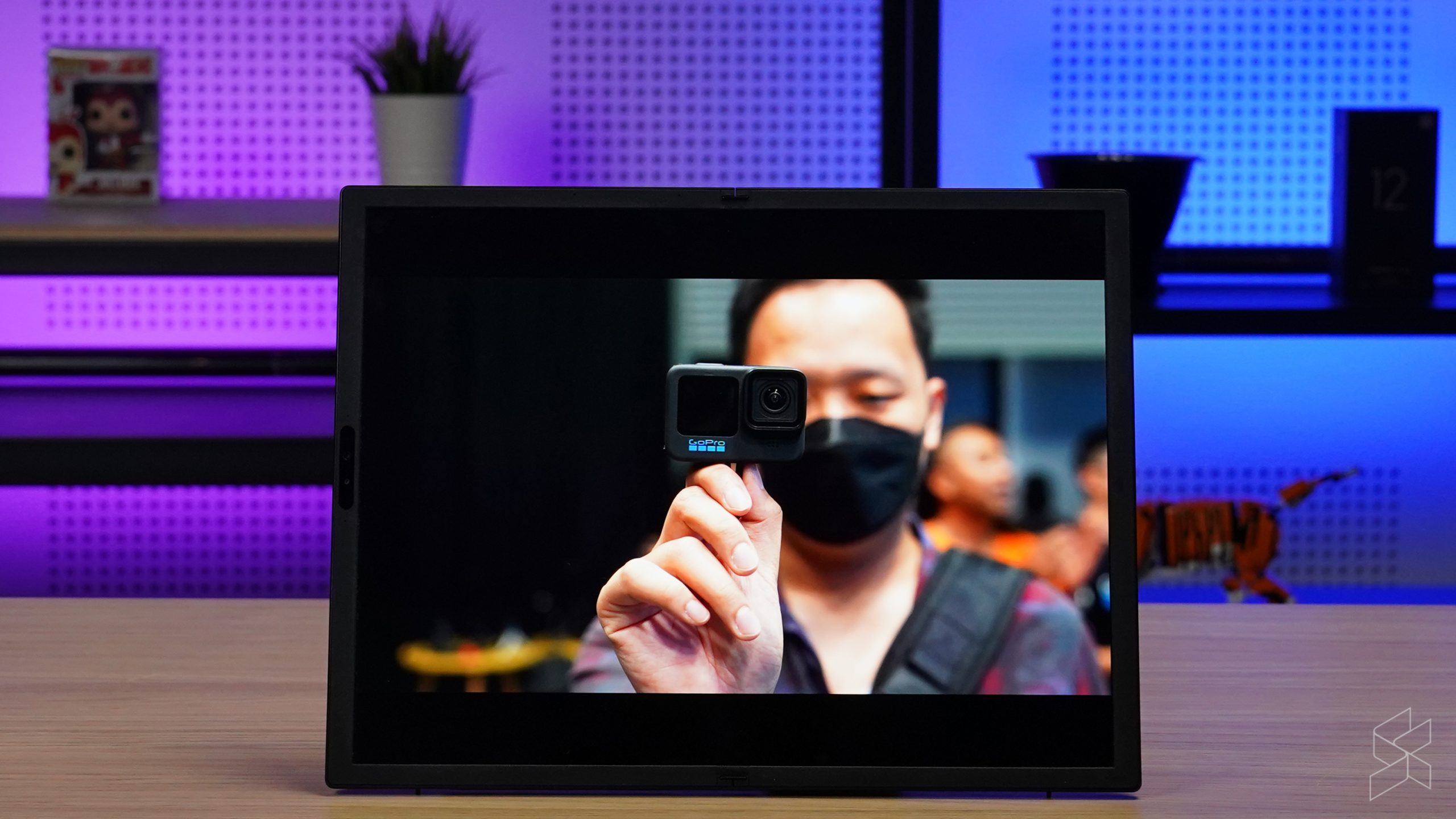
So okay, performance is middling at best. But if you wanted performance, get an actual laptop like the Zenbook 14 OLED, or get a productivity-focused machine like the Acer Swift X. The star of the show here is that gorgeous 17.3-inch, 2560 x 1920p OLED display. I’ve already stated before in my review of the Zenbook 14 OLED about how great Asus’ OLED laptops are, so I came into this review with some pretty high expectations of the display. And honestly, I think I still ended up impressed by how good the Zenbook 17 Fold OLED’s display is.
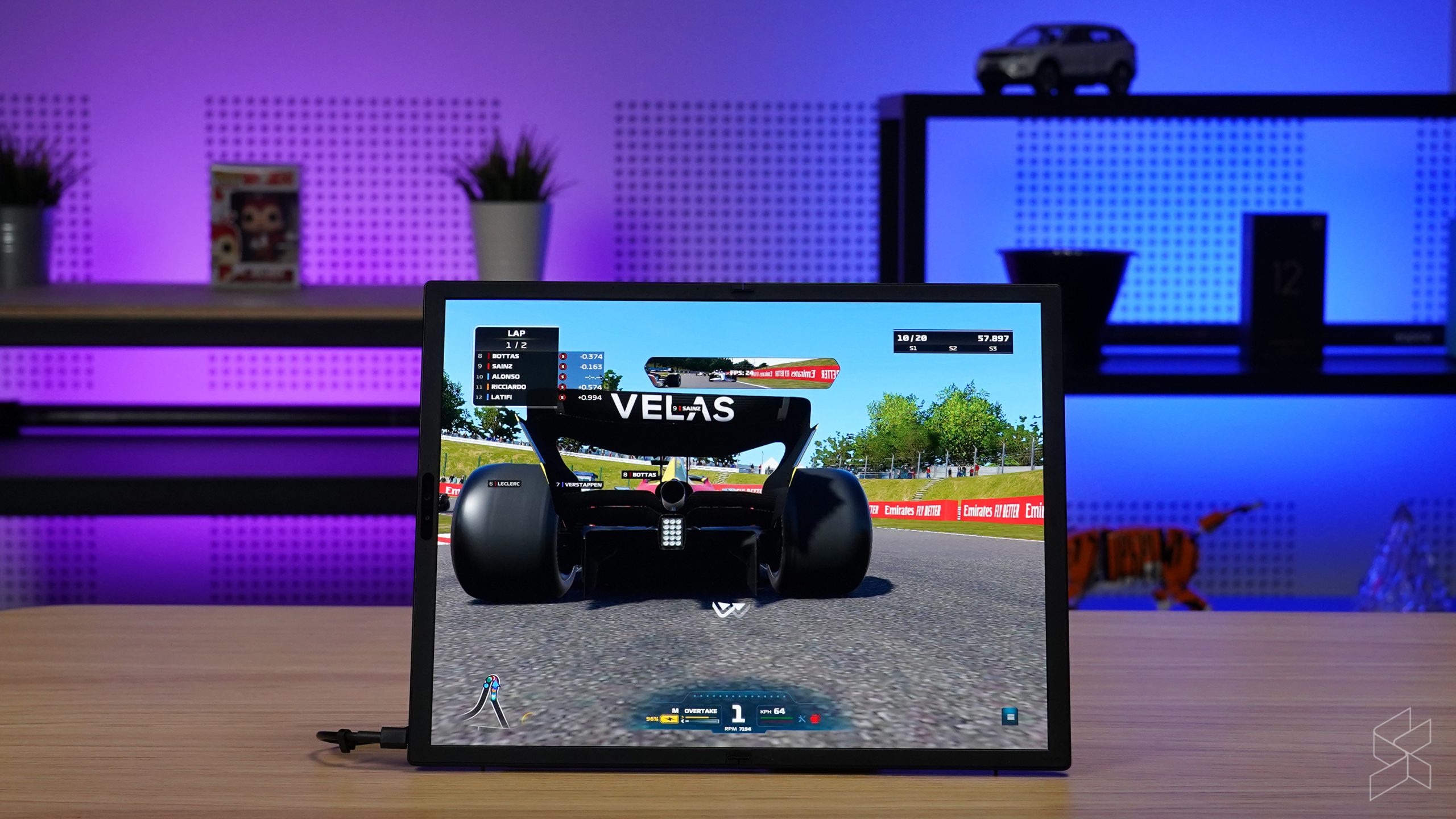
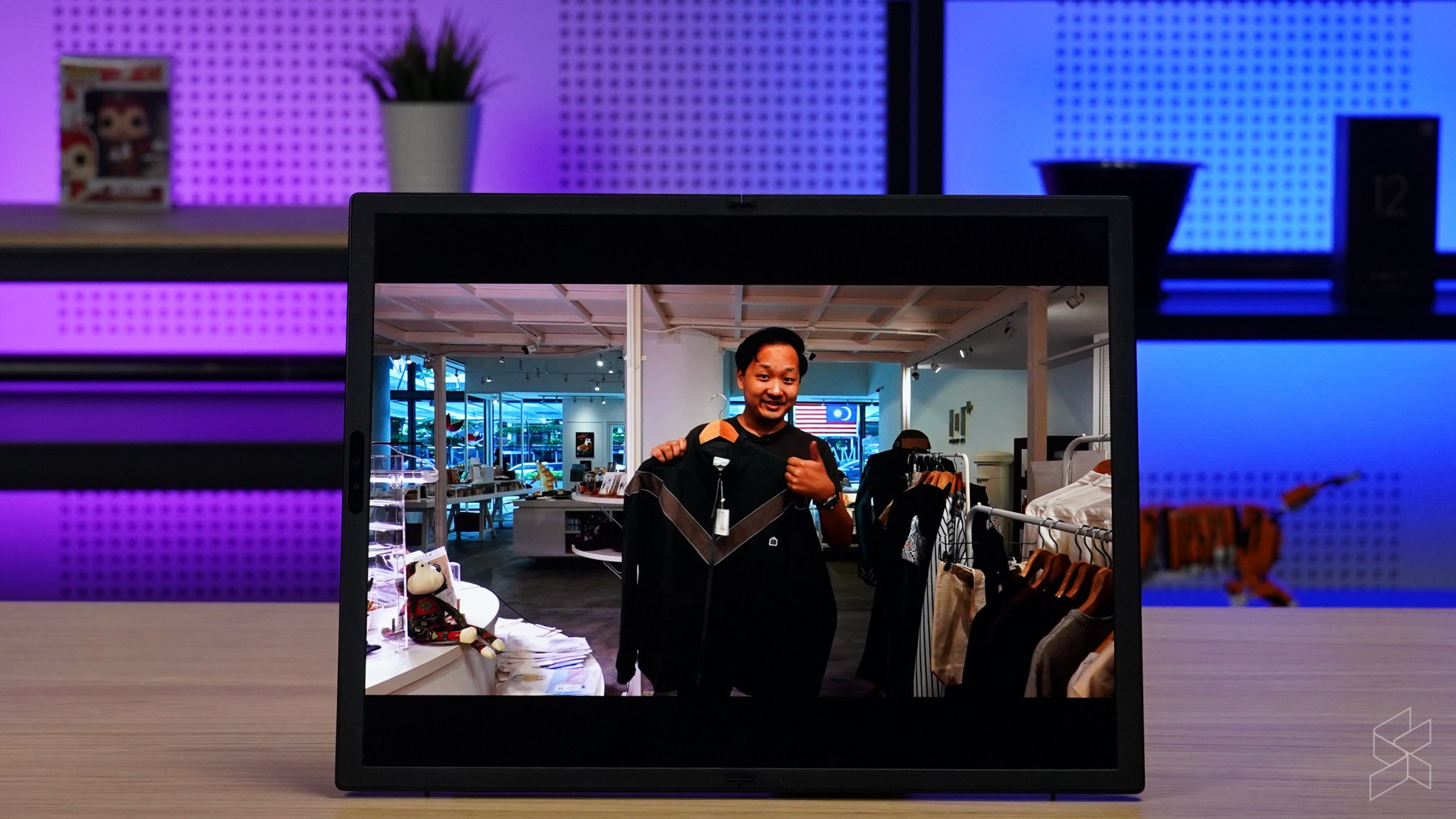
The inky blacks are darker than ivory, while the contrast on show here will put any regular laptop to shame. And if you thought an OLED display looked great on a standard laptop, when you’re able to stare at a 17.3-inch screen, it just gets so much better. Watching content was simply an amazing experience, while the extra real estate meant that working on it was great too. All you have to do is flip up the kick stand on the back and you have this monitor of immaculate quality in front of you.
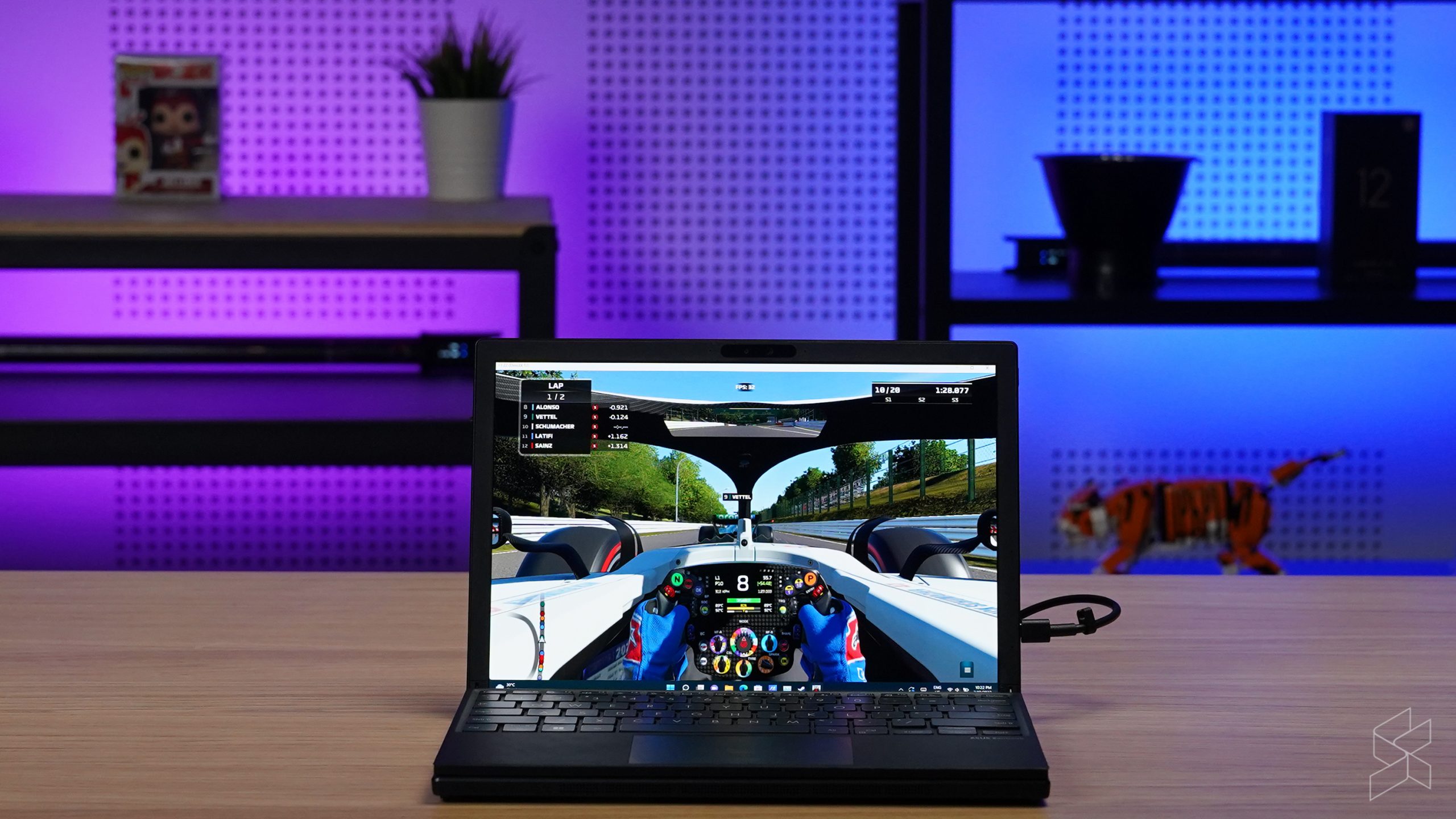
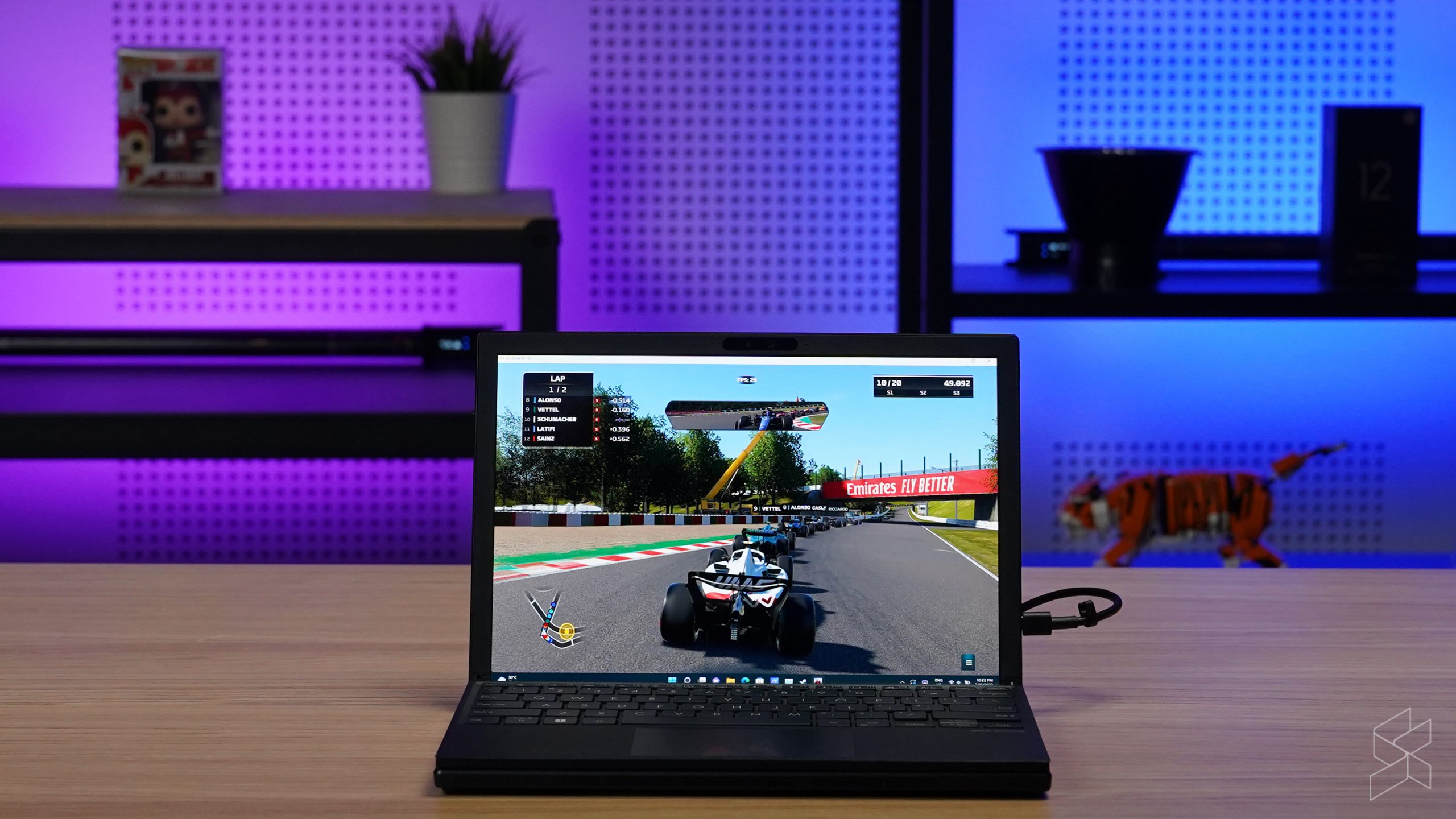
Of course, the Zenbook 17 Fold OLED’s biggest party trick is its ability to shrink down into a 12.5-inch, FHD+ laptop by snapping on the included keyboard. And when you do go from ‘desktop mode’ into ‘laptop mode’, I found that it just became a small, but still great, screen.
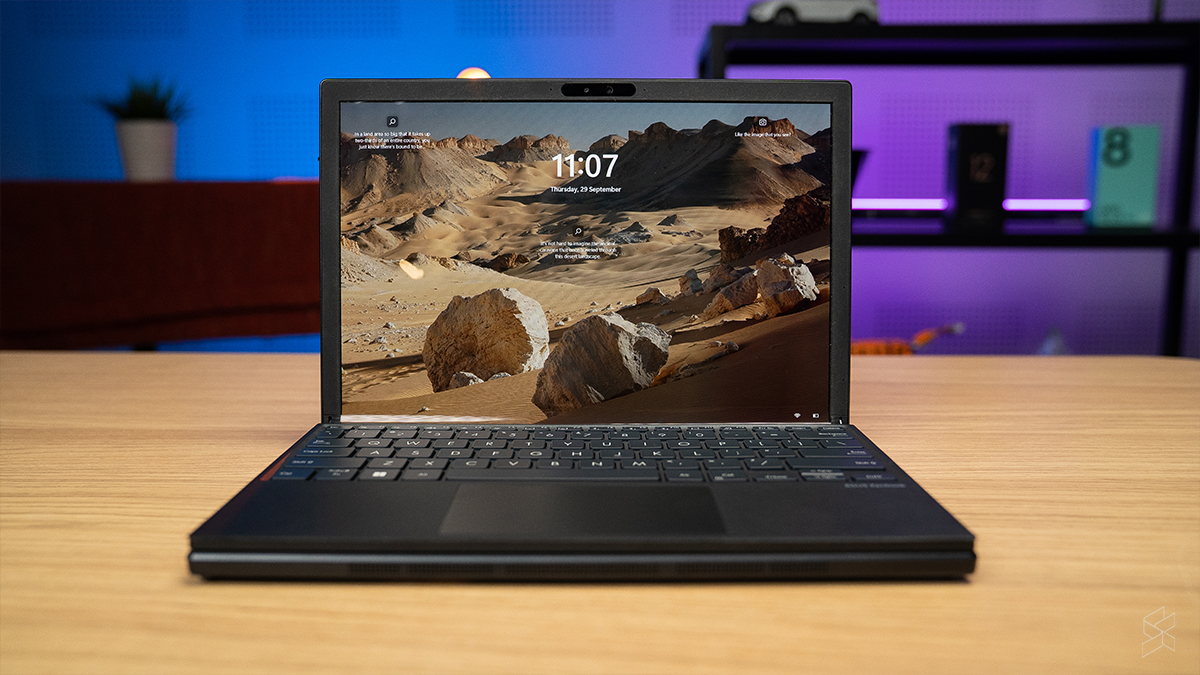
It’s not perfect though. The bezels on the Zenbook 17 Fold OLED are laughably huge. While it might not be a huge issue when your display is a 17.3-inch mammoth, when you shrink down into laptop mode, the already tiny 12.5-inch display suddenly feels a lot more claustrophobic. It almost looks like you’re working on a laptop made in 2012 even due to the bezels. Also, despite being a ‘tablet’, actually trying to use the Zenbook 17 Fold OLED as a 17.3-inch tablet is a chore. It’s hard to balance it on one hand while messing with it using the other.
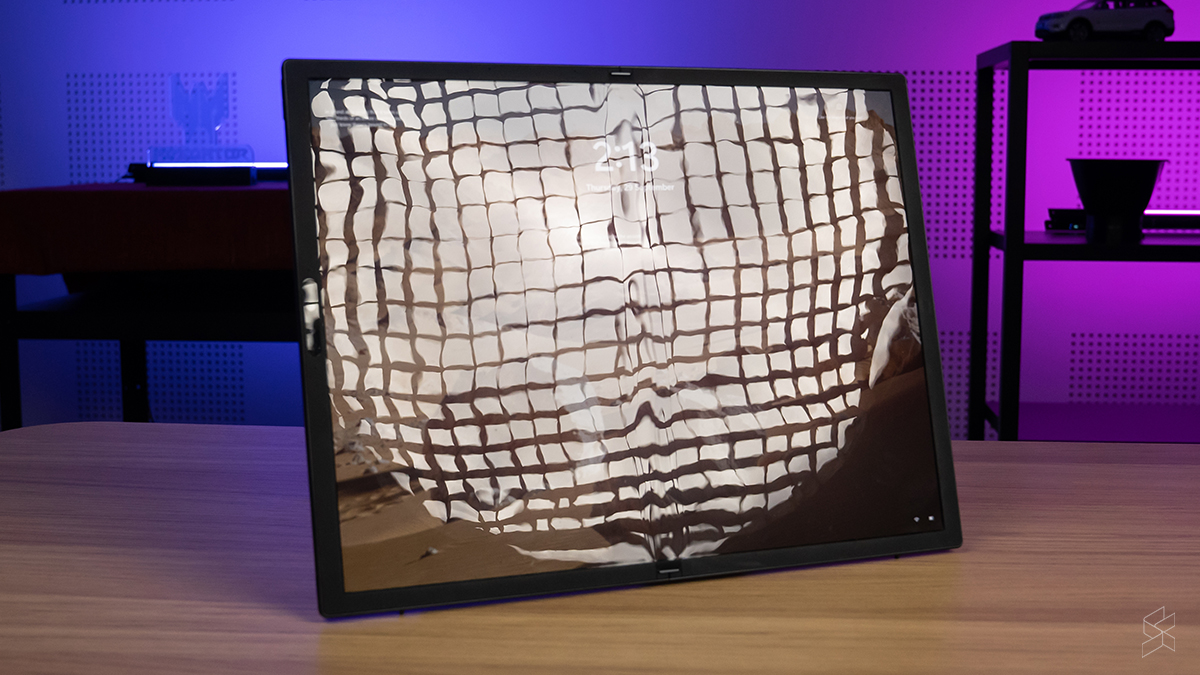

Furthermore, all that praise I heaped onto the display? Yeah, that’s mostly only when you’re looking at it head on. When you look at it from an angle, suddenly you’ll notice all the imperfections on the screen, especially that huge crease down the middle. The Zenbook 17 Fold OLED also comes with a number of warnings, such as not holding it near the hinge section, and taking extra care when folding it open and shut. Speaking of the hinge, it’s all covered up with faux leather which doesn’t inspire a lot of confidence regarding its build quality. Even the kickstand felt like a half baked idea, as it’s a simple flap rather than a solid kickstand seen on the likes of a Surface Pro or the ROG Flow Z13. It also isn’t really adjustable, typically only allowing for one angle unless I placed the keyboard against the device to help prop it up.
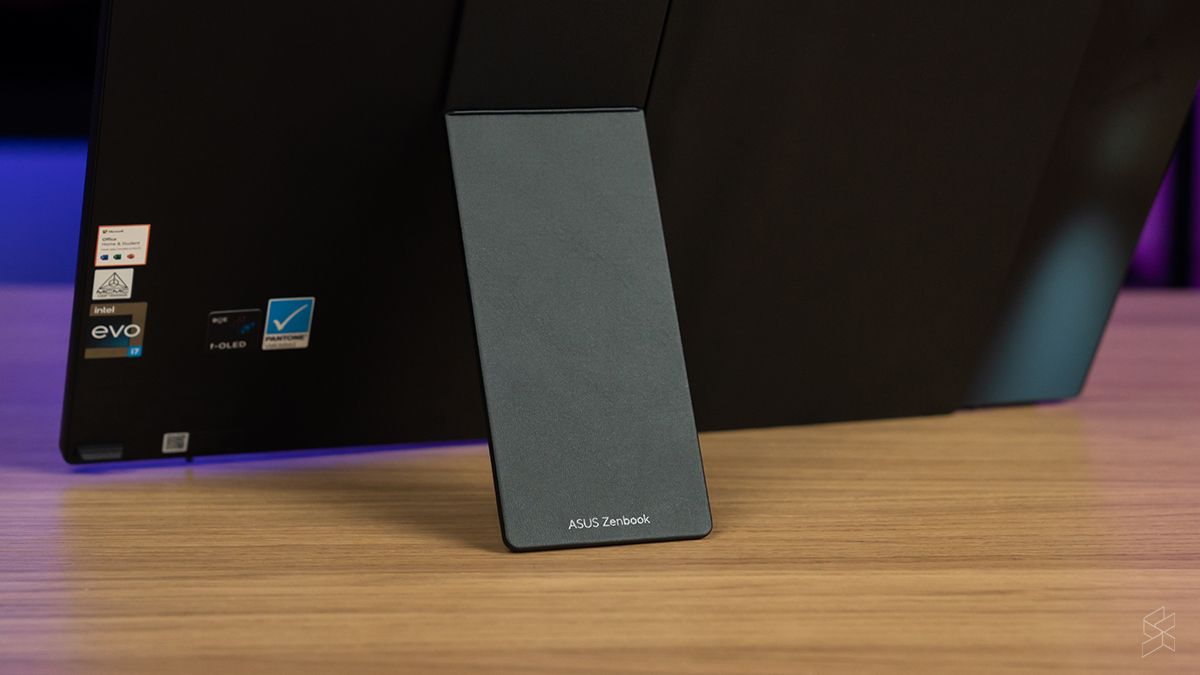
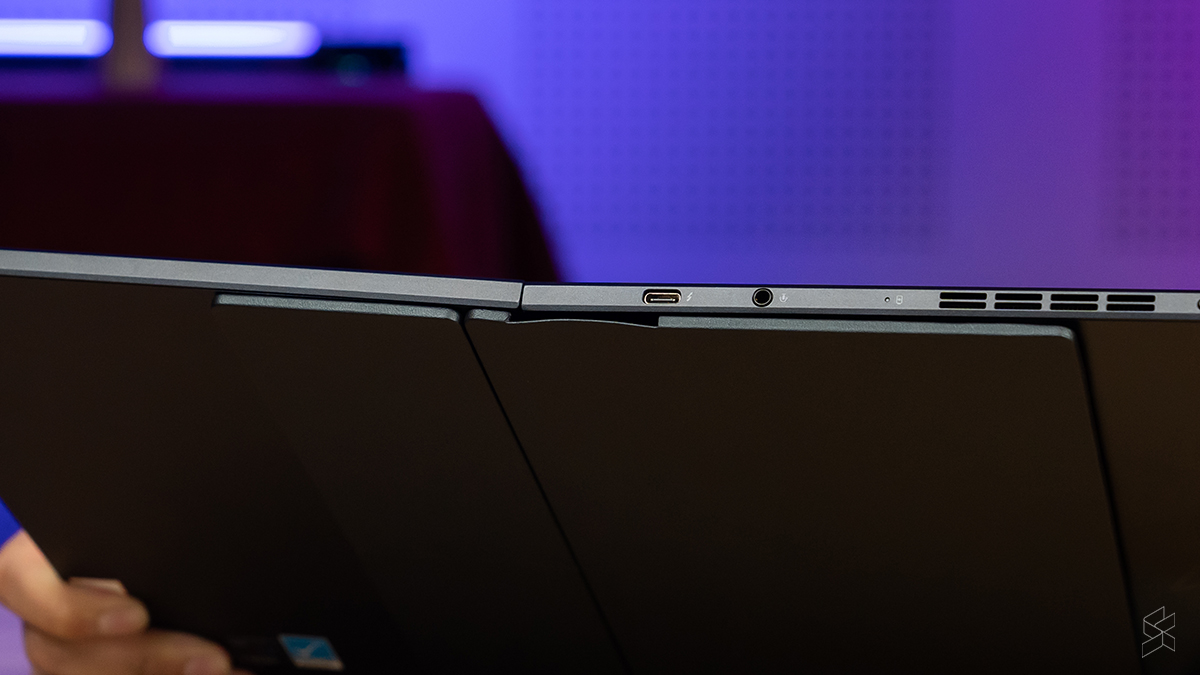
You’re not getting a particularly portable device either, as the tablet itself weighs 1.5kg without the keyboard. To Asus’ credit, they do include a faux leather case so once you fold the device shut with the keyboard sandwiched in it, you can slide it into the case for easy storage. Or, if you really want to channel your inner hipster, just lug it about in its leather case and whip it out in your next meeting in style.
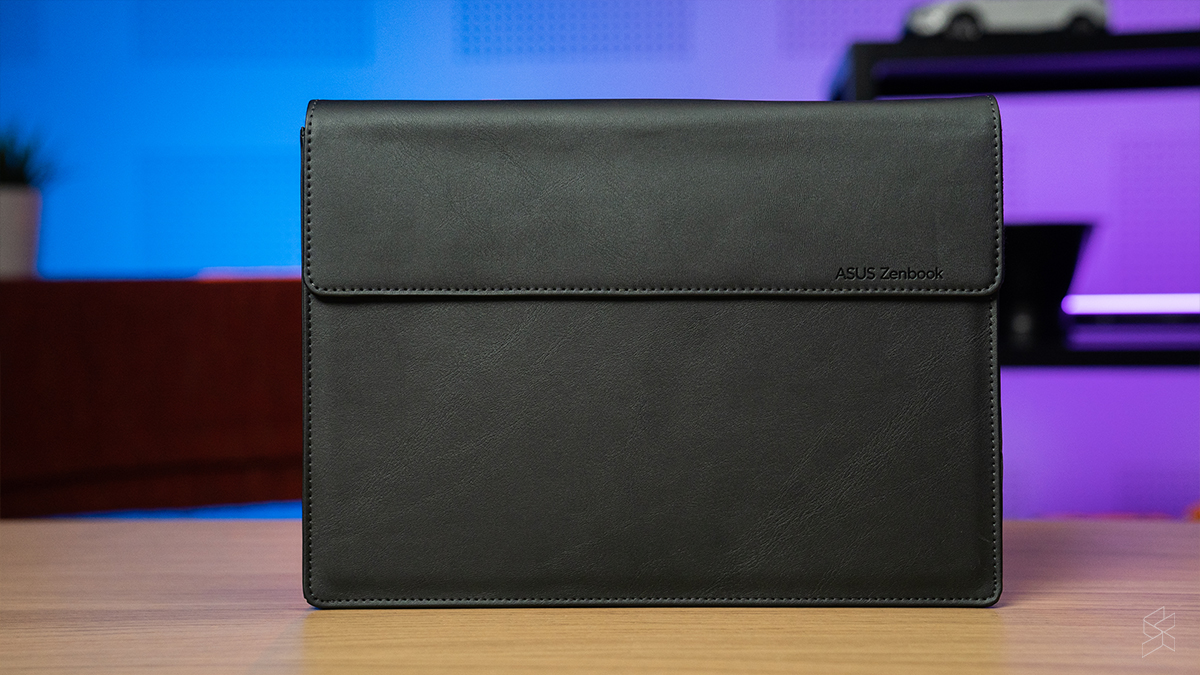
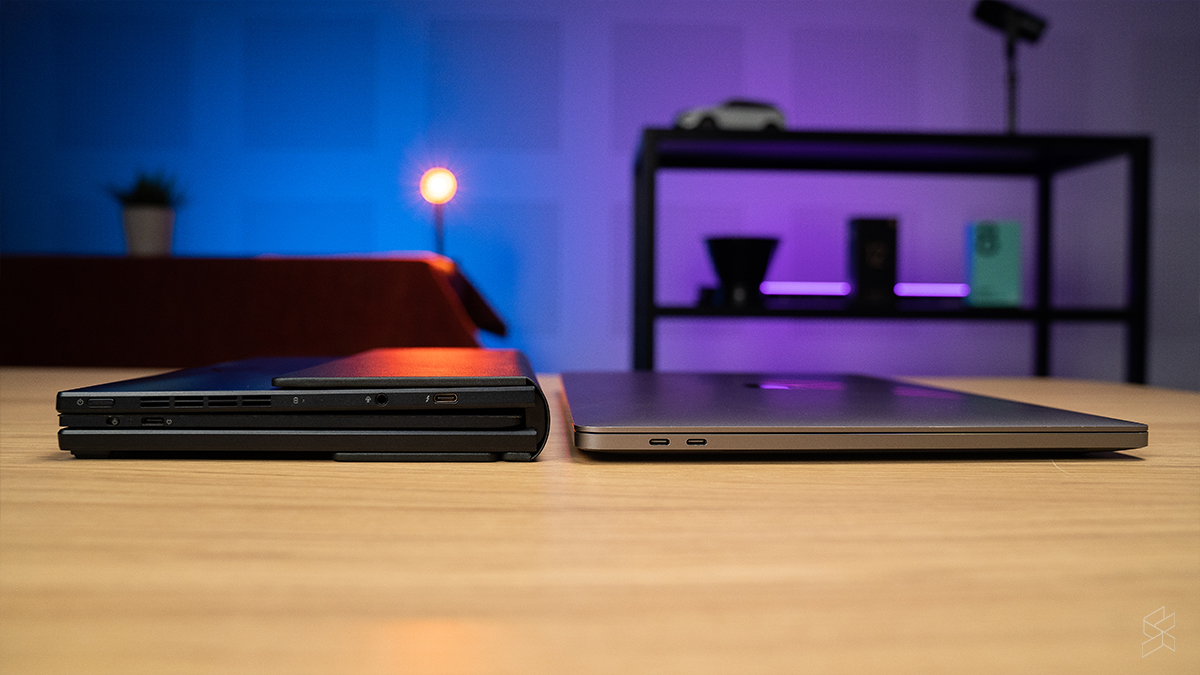
All of these complaints though really do seem like nitpicks in comparison to the biggest issue I had with the Zenbook 17 Fold OLED.
BYOK: Bring your own keyboard
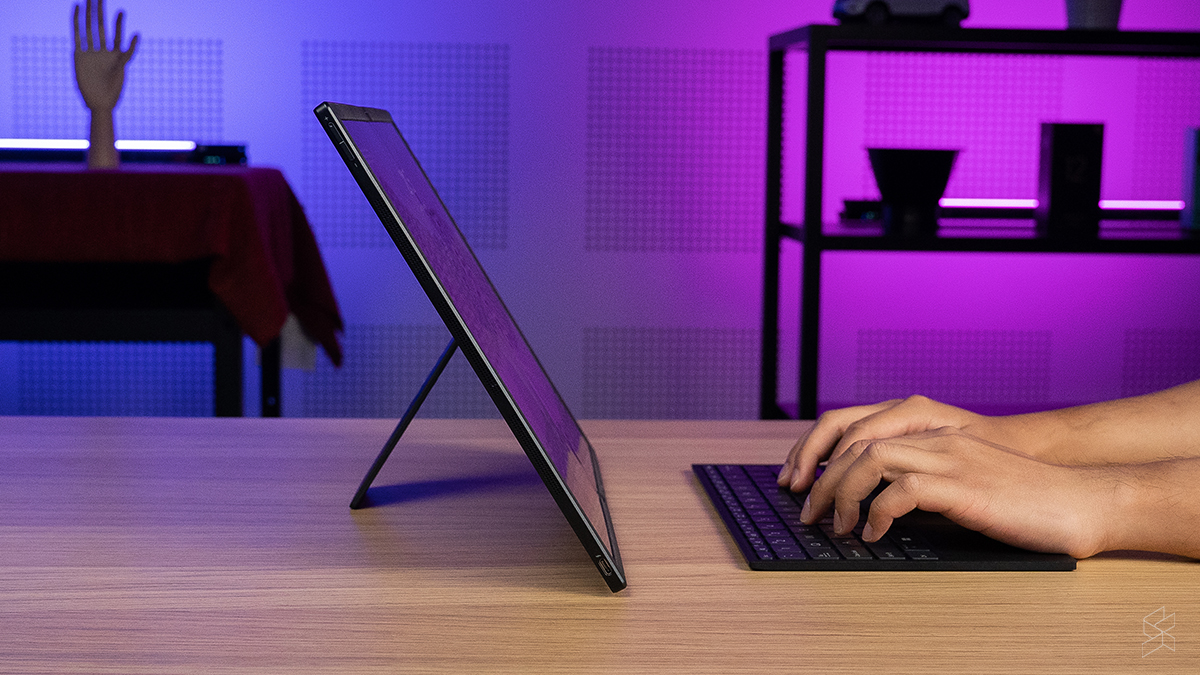
The TLDR of this section is that the included Bluetooth keyboard sucks. It’s a very poor solution to the problem of needing a physical keyboard for what is essentially a tablet. Don’t get me wrong, the typing experience itself is decent, and I liked the travel the keys have. But the touchpad was absolutely abhorrent; it frequently stops working, or jumps around the screen rather than working in a seamless movement. Perhaps it’s just some driver issues that Asus needs to iron out, or maybe the keyboard we got was slightly defective, but it just really ruined what should’ve been a solid experience.

On top of that, the setup process is pretty cumbersome too. I’m not a fan of how it attaches to the Zenbook 17 Fold OLED. It basically has a couple of magnets on the lower half of the keyboard, which you need to tack onto the bezels of the Zenbook 17 Fold OLED. I really wished Asus had instead used pogo pins to hook up the keyboard to the tablet rather than a magnet setup. It’s not like they don’t know how to do it either; I loved the ROG Flow Z13, a Surface Pro-like device that lets you snap on a keyboard via pogo pins.
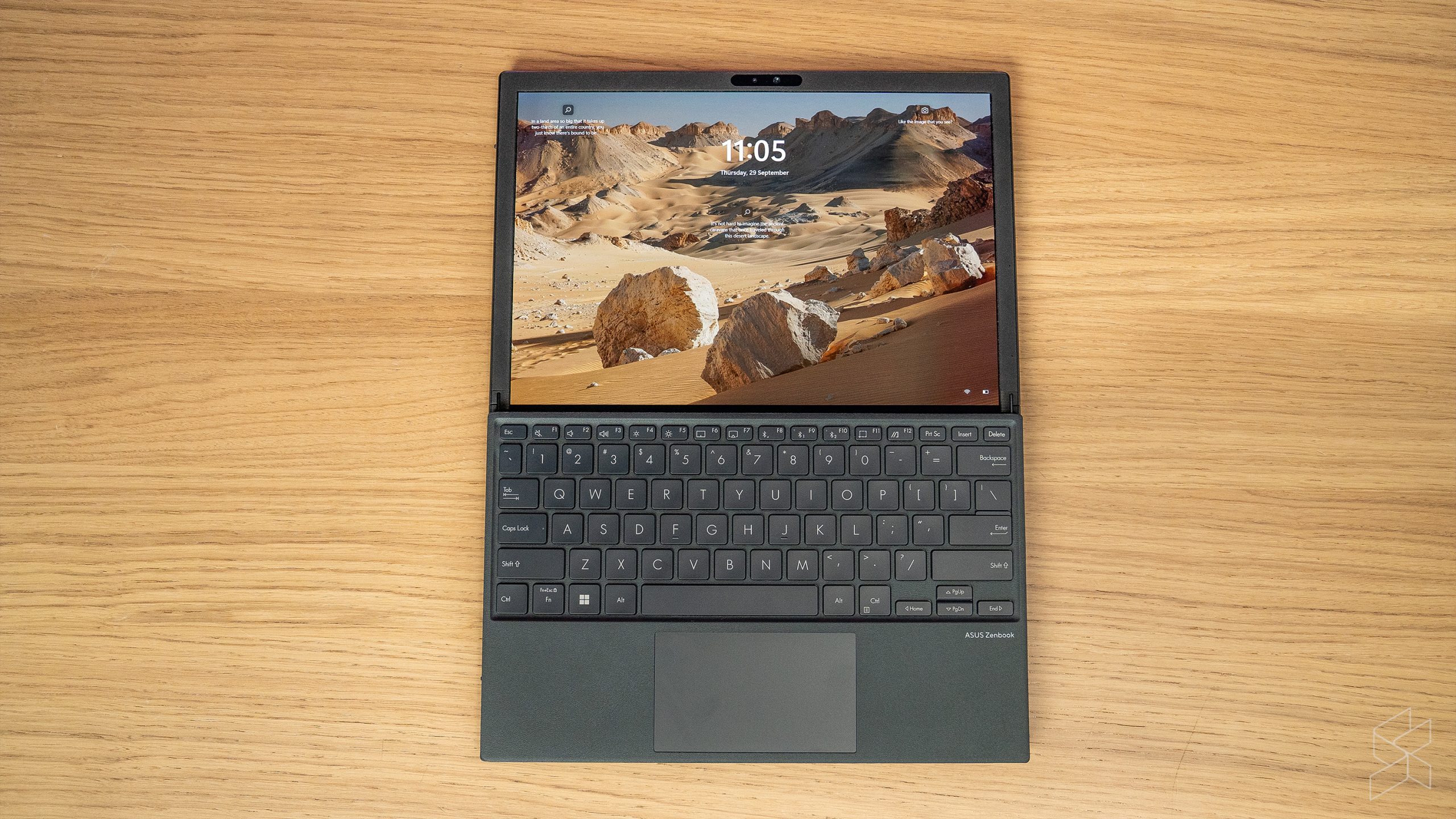
That goes on to my third point about the keyboard: it’s a Bluetooth keyboard. This means that you actually need to charge it SEPARATELY from the laptop itself. Normally when you close your screen on your laptop, everything turns off right? Not on the Zenbook 17 Fold OLED. Instead, there’s a switch on the side of the Bluetooth keyboard that you need to turn on and off, and because most of the time I keep thinking it’s a regular laptop, The same thing applies even when you fully shut down the device. I forget to turn off the keyboard and I then come to work the next day, boot up the device only to find that the keyboard’s dead because I left it on throughout the night.
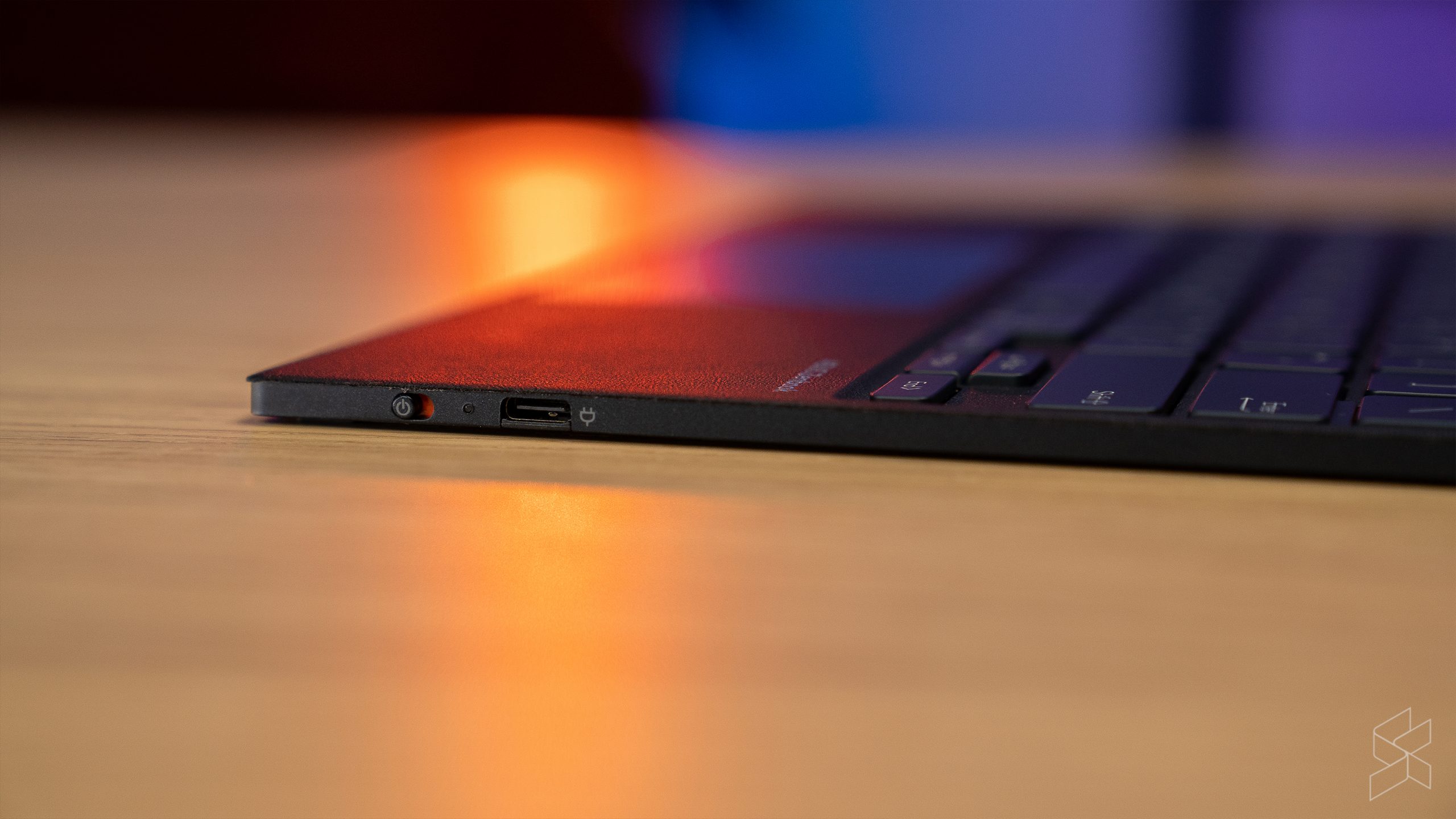
So instead of charging the laptop itself, I find myself more often than not plugging in the charger to the USB-C port on the keyboard and running the Zenbook 17 Fold OLED off battery for awhile when I start work. Here’s an idea Asus, and you can have it for free too: for the next iteration of this device, you can keep the Bluetooth connectivity on the keyboard, but perhaps also integrate pogo pins to it so that at the very least when I run out of power on the keyboard, I can set it up in its laptop mode with the keyboard pulling power via the pogo pins directly. That way it doesn’t render the entire setup useless when the keyboard runs out of juice.
There’s some other minor issues with the Zenbook 17 Fold OLED too, such as having just two USB-C ports for I/O, some pretty mediocre speakers that get loud enough but are somewhat hollow sounding and the overall jankiness of the setup, but nothing is as bad as that keyboard.
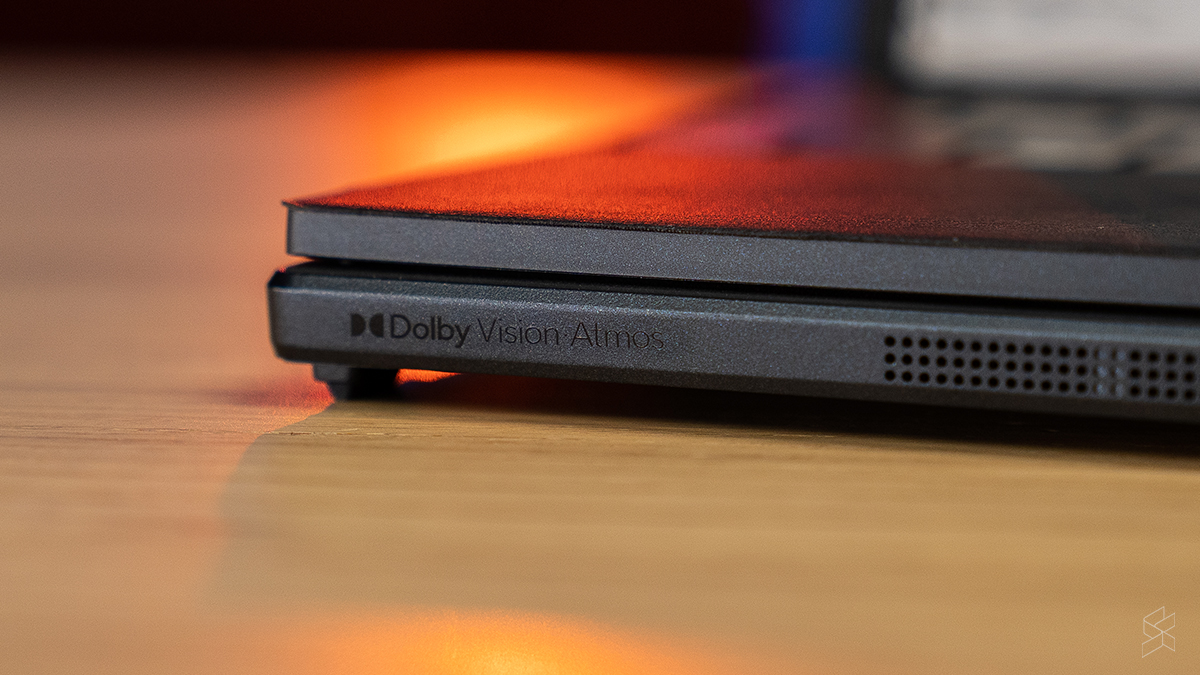
Would you pay this much to be an early adopter?
My gripes with the keyboard aside, I’ll still be the first to admit that this is one of the coolest things to have graced the SoyaCincau office (in my opinion anyway). There’s nothing quite like heading into a meeting with this weird looking, tiny laptop that looks like the netbooks of yesteryear, only to switch to desktop mode and have everyone in the room staring at your setup.
But the problem with these niche first generation devices is that, it’s a first generation device. This means that if you’re going to actually get one of these, most of the time you’re going to have to deal with problems that made it past R&D, such as that godawful keyboard. It’s also pretty bulky and heavy, it requires you to take extreme care when handling it, and if you do run into an issue you won’t be able to just google for the answer online as let’s face it, there’s probably only a handful of other people using this device.
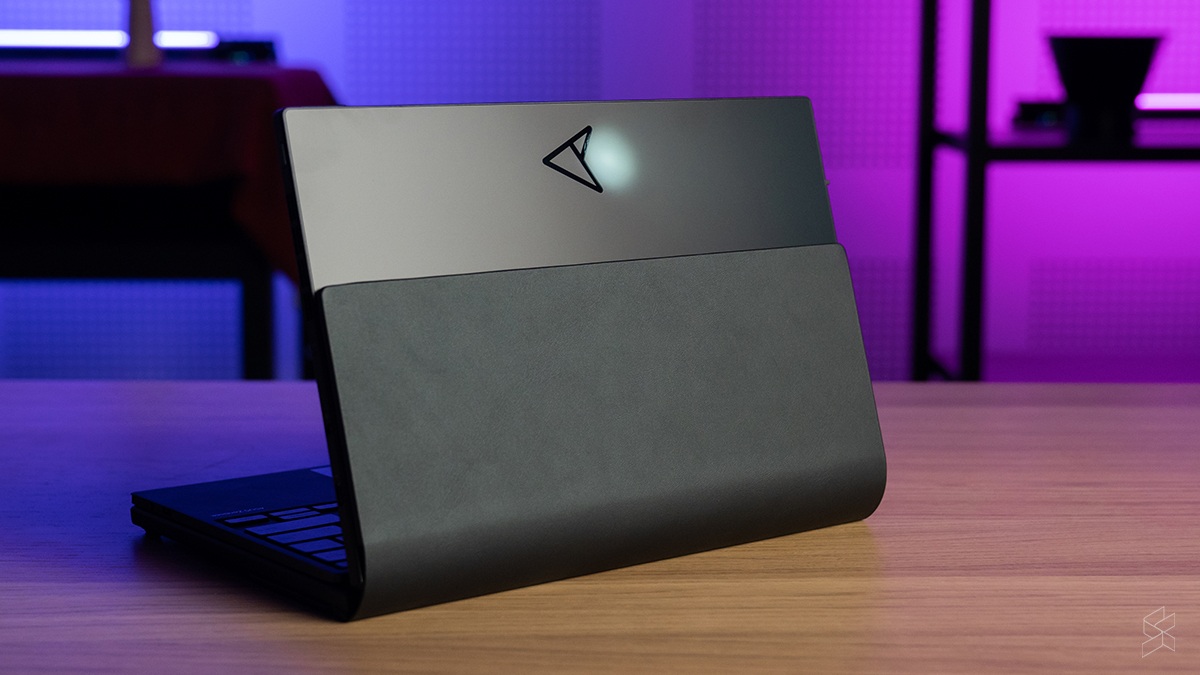
Even if you’re able to put all of that aside—maybe you just love the idea of a folding laptop, or perhaps you’re a huge tech enthusiast who loves owning these weird devices—the biggest issue here is its price tag. The Zenbook 17 Fold OLED, like the first generation Samsung Galaxy Z Fold, isn’t cheap, not at all. If you plan to get one of these bad boys for yourself, you’re going to have to set aside a whopping RM14,999! That is a lot of money, and it’s especially a lot of money to pay just to be a beta tester for a glorified prototype.
Personally, for RM14,999 I’d rather get the ROG Flow Z13 gaming tablet. It’s also a fairly eccentric device, sure, but it works well. The idea is great, and the execution was great too. But it wasn’t always like that. The ROG Flow Z13 is actually Asus’ second attempt at making a gaming tablet. The first was this gargantuan 17.3-inch tablet packing an Intel Core i9 processor with an NVIDIA GeForce RTX 2060 called the Asus ROG Mothership. Needless to say, it wasn’t very well received because even though it was a tablet, it was heavy, cumbersome and not that great to use. The ROG Flow Z13 meanwhile was excellent; the 13.4-inch tablet was light and portable, yet powerful enough to play the latest games.
That’s exactly why I think that Asus still has a chance with their foldable laptop idea. They’ve showed that they can make a concept into reality, learn from their mistakes and then make that concept even better than what they originally thought of. The Zenbook 17 Fold OLED isn’t a perfect device, far from it even. But as long as Asus can learn from their mistakes here, I’m pretty excited to see how they can take this idea to the next level.

